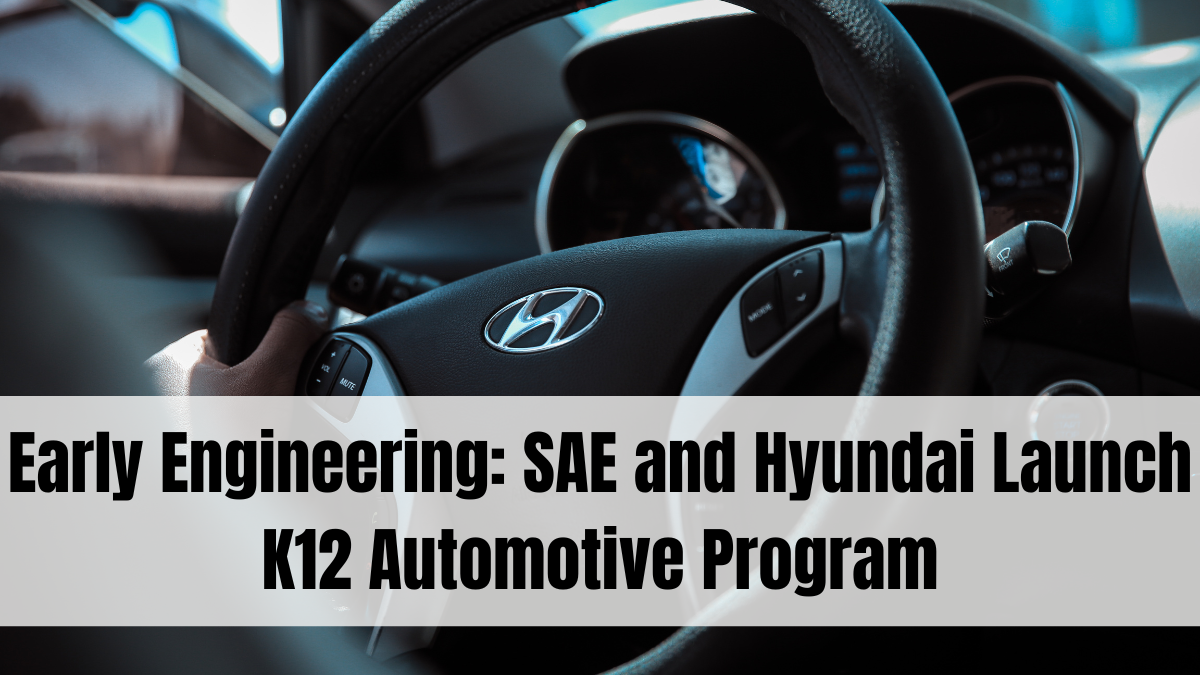Gone are the days when automotive engineering was reserved for college or trade school. In Georgia, a powerful partnership between Hyundai Motor Group and SAE International is introducing school children to real-world vehicle design and clean energy concepts — years before graduation. This effort marks a bold step in early automotive engineering education, giving students from kindergarten through 12th grade the tools to become tomorrow’s automotive innovators.
By embedding hands-on, project-based engineering into the K-12 experience, the program not only boosts STEM engagement but also addresses long-term workforce needs in the EV and mobility sectors.

The Vision: Start Young, Think Big
The idea behind early automotive engineering education is simple yet revolutionary: start technical exposure young, nurture interest in transportation technology, and equip students with real skills before they even enter higher education.
Through this initiative, students learn:
-
Vehicle design fundamentals
-
Renewable energy concepts like EVs and hydrogen power
-
Mechanical systems including wheels, axles, and propulsion
-
Engineering problem-solving and prototyping
Whether it’s assembling model EVs or coding simple robotic cars, students are encouraged to think, build, and test like real engineers.
SAE and Hyundai: A Partnership with Purpose
SAE International, known for setting global mobility engineering standards, has joined forces with Hyundai to deliver age-appropriate engineering experiences directly into Georgia’s public school classrooms.
The partnership provides:
-
STEM classroom kits with all required materials
-
Teacher training modules to support K-12 educators
-
Digital curriculum aligned with state science standards
-
Community events like student showcases and local challenges
This makes high-quality engineering education available even in underserved schools that previously lacked access to advanced STEM tools.
What Students Learn by Grade Level
The curriculum is tailored to be developmentally appropriate at every stage:
-
Elementary School: Basic motion, design thinking, and vehicle modeling
-
Middle School: Simple electronics, intro to EVs, energy systems
-
High School: Mechanical engineering principles, fuel cell experiments, coding for vehicle sensors
By the time students graduate, they not only understand how vehicles work — they’ve built them, tested them, and pitched their ideas in group presentations.
Inspiring Career Pathways in EV Manufacturing
Georgia is fast becoming a major hub for EV manufacturing, and early exposure is vital to building a homegrown technical workforce. This program helps students see a future in:
-
Electric vehicle design and assembly
-
Battery technology and high-voltage systems
-
Autonomous vehicle software and ADAS
-
Robotics, AI, and green automotive engineering
This early automotive engineering education model also introduces students to technical college options and automotive apprenticeships right after high school.
Making Engineering Inclusive and Exciting
One of the most promising aspects of the program is its ability to reach diverse learners, including girls, underrepresented minorities, and students in rural areas. The hands-on, team-based format builds:
-
Confidence in problem-solving
-
Collaboration and leadership skills
-
Curiosity about real-world technology
-
Motivation to pursue STEM careers
Rather than being abstract or intimidating, engineering becomes fun, practical, and personal.
FAQs
What is early automotive engineering education?
It refers to programs that introduce K-12 students to automotive engineering concepts through hands-on, STEM-based activities related to vehicle design and clean energy.
Why start engineering education so early?
Early exposure builds foundational skills, sparks interest in STEM, and helps students discover potential careers before college or vocational school.
What role does SAE and Hyundai play?
They provide curriculum, materials, and support to schools, ensuring students and teachers have everything needed to run engineering projects successfully.
Are students building real cars?
They build models and prototypes using kits, motors, sensors, and even basic software — giving them a scaled-down but realistic experience of automotive engineering.
Can this lead to future career opportunities?
Yes. Programs like these align with Georgia’s growing EV sector and help students explore technical colleges, apprenticeships, and jobs in green mobility fields.
Click here to know more.
